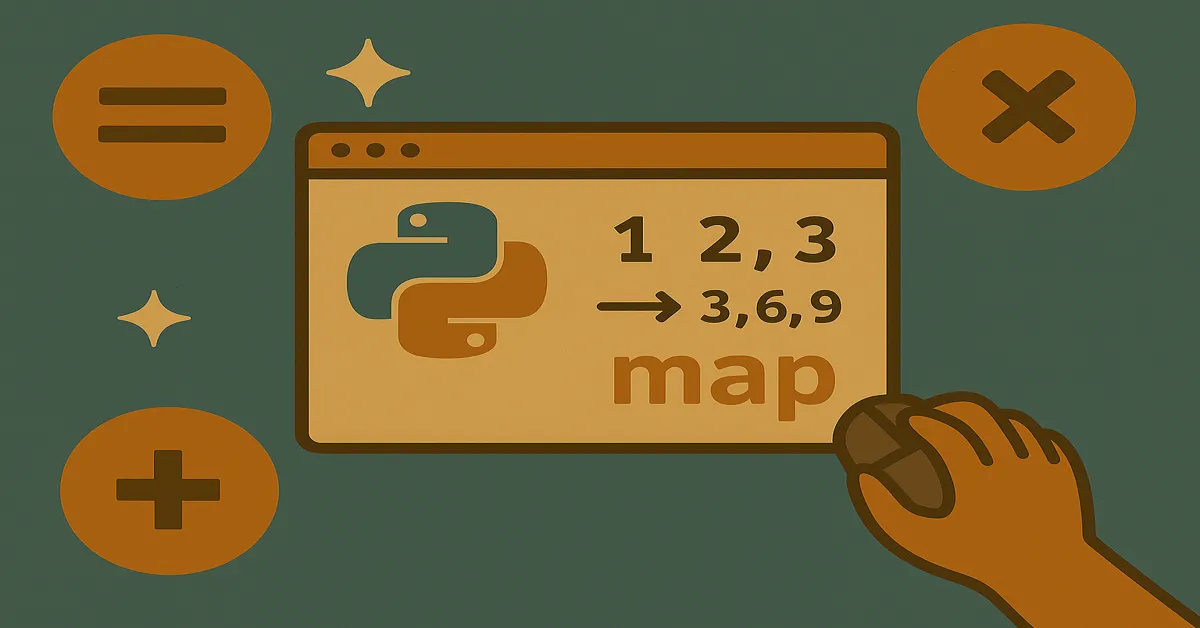Python has firmly established itself as one of the world’s most popular programming languages, thanks largely to its simplicity and readability. The language is favored not only by professional developers but also by data scientists, analysts, and even hobbyists who want to automate everyday tasks. A fundamental skill in Python programming involves manipulating data efficiently, and the map() function stands out as a powerful tool for this purpose – Python Map Function.
Today, we’ll explore how to triple all numbers in a given list of integers using Python’s map() function. This process highlights not only Python’s elegant syntax but also demonstrates how easily Python handles tasks that might be more cumbersome in other programming languages.
Understanding Python’s Map Function
The map() function in Python applies a specified function to all items in an iterable (such as a list) and returns a map object (which can then be converted into a list or tuple). The basic syntax is:
map(function, iterable)Let’s break it down:
- function: The function you want to apply to each item.
- iterable: The iterable containing items (e.g., lists, tuples, sets).
For example, consider a simple function to double the numbers in a list:
numbers = [1, 2, 3, 4]
doubled = list(map(lambda x: x * 2, numbers))
print(doubled) # Output: [2, 4, 6, 8]Writing a Python Program to Triple All Numbers
Now, let’s specifically focus on tripling numbers. Imagine you have the following list of integers:
numbers = [5, 10, 15, 20, 25]To triple each number in the list, we can efficiently use the map() function combined with a simple lambda function:
tripled_numbers = list(map(lambda x: x * 3, numbers))
print(tripled_numbers)Breaking Down the Example
Let’s break down what’s happening here in detail:
- We start with the original list of integers:
numbers = [5, 10, 15, 20, 25] - The lambda function (
lambda x: x * 3) is an anonymous function that takes each element (x) from the list and multiplies it by 3. - The
map()function applies this lambda function to each element in our list. - Finally, the result is cast back into a list using
list()to make it easily readable and usable.
When executed, the code produces:
[15, 30, 45, 60, 75]Advantages of Using the Map Function
- Efficiency:
map()provides a concise and efficient way to transform lists without needing explicit loops. - Readability: It enhances readability by condensing operations into fewer, clearer lines of code.
- Versatility: Useful across various scenarios where list transformations are common.
Alternative Method: List Comprehension
Although the map() function is powerful, Python programmers often use list comprehensions for similar tasks. Here’s the equivalent operation using list comprehension:
tripled_numbers = [x * 3 for x in numbers]
print(tripled_numbers)List comprehensions are popular due to their readability and directness. Choosing between map() and comprehensions depends on your coding style preference and specific use cases.
Real-World Applications
Understanding how to manipulate lists is essential in real-world applications, such as:
- Data Analysis: Quickly performing mathematical operations on large datasets.
- Machine Learning: Preparing data for algorithms by scaling and transforming inputs.
- Automation: Simplifying repetitive tasks like file handling, data parsing, or even automation scripts.
Advanced Use of Map: Using Defined Functions
Instead of lambda expressions, you might prefer defining explicit functions for clarity, especially for more complex operations:
def triple_number(n):
return n * 3
numbers = [4, 8, 12, 16]
tripled_numbers = list(map(triple_number, numbers))
print(tripled_numbers)This method achieves the same result and can improve readability for more complex transformations.
Efficiency and Performance Considerations
For large datasets, performance can matter significantly. Although modern Python implementations handle map() and comprehensions similarly in performance, understanding subtle differences can sometimes influence choices:
map()might perform slightly faster for simple operations due to internal optimizations.- List comprehensions generally perform well and often provide enhanced readability, making them preferable for most developers.
Potential Errors and How to Avoid Them
Common mistakes using map() include:
- Forgetting to convert the
map()object into a list, which results in printing a map object rather than the intended list:numbers = [1, 2, 3] tripled_numbers = map(lambda x: x * 3, numbers) print(tripled_numbers) # This prints a map object, not the list
To fix this, simply wrap the map object in list():
print(list(tripled_numbers)) # Correct output: [3, 6, 9]Practicing with Different Lists
Try practicing with different lists to fully understand the flexibility of the map() function:
- Negative numbers:
[−3, −6, −9] - Mixed integers:
[−1, 0, 1] - Larger datasets to test performance efficiency
Here’s an example practice exercise:
numbers = [-3, -6, -9]
tripled_numbers = list(map(lambda x: x * 3, numbers))
print(tripled_numbers) # Output: [-9, -18, -27]Summary and Key Takeaways
Learning to effectively utilize Python’s built-in functions like map() is crucial for any programmer seeking efficiency and readability. Through the simple task of tripling numbers in a list, we’ve explored both practical and theoretical aspects of Python’s functionality. Here are your main takeaways:
map()provides a concise, efficient way to apply functions to iterable objects.- Lambda functions are ideal for quick, one-off tasks.
- Consider defined functions for clarity and maintainability.
- List comprehensions are an alternative, highly readable solution.
By mastering these basic yet powerful tools, you enhance your Python coding capabilities significantly – Python Map Function.
Read:
30 Python Interview Questions: A Comprehensive Guide for 2025
Understanding Arithmetic Operators in Python: A Developer’s 2025 Guide
The Best Way to Master Python: A Comprehensive Blueprint for Real Fluency











